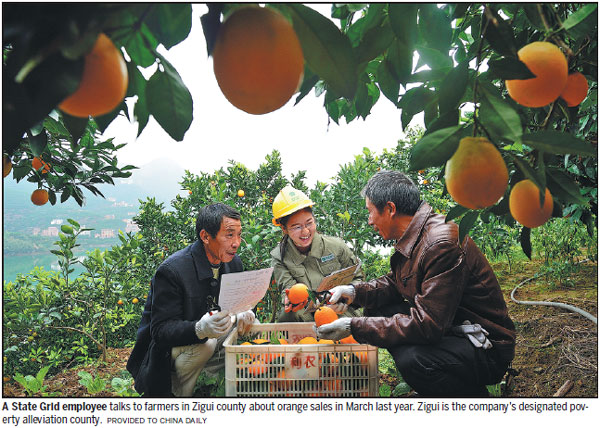State Grid vows to boost its regional investment
Updated: 2018-07-12  Print
Print 


Power supplier plans to expand distribution networks.
Beijing-based State Grid Corp of China has pledged to invest 21 billion yuan ($3.2 billion) over the next three years in power grid construction in China's poverty stricken regions.
The company, China's main power supplier that runs the majority of the nation's electricity distribution networks, said it will invest 6.6 billion yuan this year alone in 94 power grid projects each with a capacity of more than 35 kilovolts, and 1,379 power grid projects each with a capacity below 10 kilovolts.
State Grid vows to boost its regional investment
State Grid will take advantage of its nationwide electricity distribution network to ensure sufficient power supply in poverty stricken regions, said Zhang Lianying, head of the poverty relief office of State Grid.
The company has provided a power distribution network in 1,538 poverty stricken villages in Sichuan and Gansu provinces, Xinjiang Uygur autonomous region and Tibet autonomous region from 2016 to 2017.
Company spokesperson Wang Yanfang, said: "The company will also continue to boost clean energy on-grid capacity to increase the percentage of clean energy power generation and on-grid-connection, as China takes significant steps to reduce its reliance on fossil fuels, upgrade its energy structure and improve air quality".
As China strives to increase its clean energy capacity, amid a global transition toward a low-carbon future, the country plans to invest 2.5 trillion yuan in renewable energy by 2020, according to the National Energy Administration.
The administration approved six provincial-level regions - Qinghai, Zhejiang, Sichuan and Gansu provinces, and the Tibet and Ningxia Hui autonomous regions - to spearhead clean energy development in February.
The company's Qinghai branch conducted a trial from June 20 to June 28 in the province, where 6 million people used nothing but clean energy for nine consecutive days, as the region plans to expand its solar and wind capacity to 20 million kilowatts by 2020.
During the nine-day clean energy trial, it cut carbon dioxide emissions by 5,700 tons, said Xing Zhanxiong, general manager of the company.
China's total installed renewable energy capacity reached 650 million kilowatts in 2017, up 14 percent from 2016. Clean energy generated 1.7 trillion kilowatt-hours of electricity last year, accounting for 26.4 percent of the country's total.
The company donated six centralized photovoltaic power stations to villages in Hubei province in February, with its investment reaching 173 million yuan. The power generated from the photovoltaic power stations will boost growth momentum in the region, it said.
In addition, the company has also helped with sales of local agricultural products, with the sales volume exceeding 1.6 million yuan.
The company has recently said it has achieved success in power connection in countries and regions participating in the Belt and Road Initiative and eyes further inroads in the future.
It has worked on major power grid projects in seven countries and regions with total assets exceeding $65 billion as electricity infrastructure construction has become one of the most active sectors in the Belt and Road Initiative.
The company's ultra high-voltage project in Brazil has played an important role in Brazil's power connections and has provided 22 million local people with access to electricity.
zhengxin@chinadaily.com.cn









